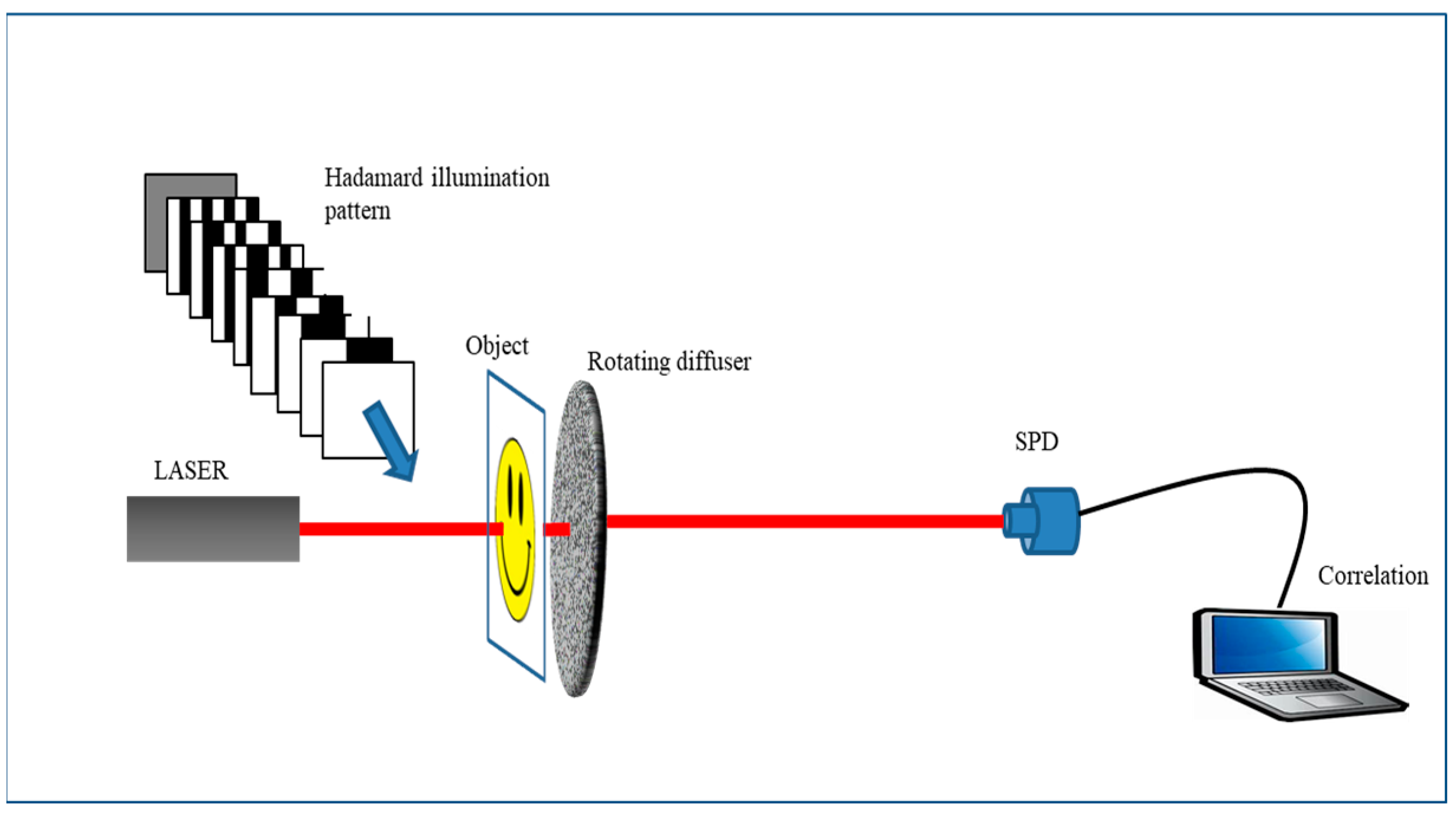Imaging Incoherent Target Using Hadamard Basis Patterns †
Abstract
:1. Introduction
2. Theory
3. Results and Discussion
4. Conclusions
Author Contributions
Funding
Institutional Review Board Statement
Informed Consent Statement
Data Availability Statement
Acknowledgments
Conflicts of Interest
References
- Takeda, M.; Wang, W.; Duan, Z.; Miyamoto, Y. Coherence holography. Opt. Express 2005, 13, 9629–9635. [Google Scholar] [CrossRef] [PubMed]
- Zhang, Z.; Wang, X.; Zheng, G.; Zhong, J. Hadamard single-pixel imaging versus Fourier single-pixel imaging. Opt. Express 2017, 25, 19619–19639. [Google Scholar] [CrossRef] [PubMed]
- Yang, X.; Liu, Y.; Mou, X.; Hu, T.; Yuan, F.; Cheng, E. Imaging in turbid water based on a Hadamard single-pixel imaging system. Opt. Express 2021, 29, 12010–12023. [Google Scholar] [CrossRef] [PubMed]
- Singh, R.K. Hybrid correlation holography with a single pixel detector. Opt. Lett. 2017, 42, 2515–2518. [Google Scholar] [CrossRef] [PubMed]
- Mandal, A.C.; Sarkar, T.; Zalevsky, Z.; Singh, R.K. Structured transmittance illumination coherence holography. Sci. Rep. 2022, 12, 4564. [Google Scholar] [CrossRef] [PubMed]
- Pratt, W.K.; Kane, J.; Andrews, H.C. Hadamard transform image coding. Proc. IEEE 1969, 57, 58–68. [Google Scholar] [CrossRef]


Disclaimer/Publisher’s Note: The statements, opinions and data contained in all publications are solely those of the individual author(s) and contributor(s) and not of MDPI and/or the editor(s). MDPI and/or the editor(s) disclaim responsibility for any injury to people or property resulting from any ideas, methods, instructions or products referred to in the content. |
© 2023 by the authors. Licensee MDPI, Basel, Switzerland. This article is an open access article distributed under the terms and conditions of the Creative Commons Attribution (CC BY) license (https://creativecommons.org/licenses/by/4.0/).
Share and Cite
Karmakar, T.; Singh, R.; Singh, R.K. Imaging Incoherent Target Using Hadamard Basis Patterns. Eng. Proc. 2023, 34, 17. https://doi.org/10.3390/HMAM2-14271
Karmakar T, Singh R, Singh RK. Imaging Incoherent Target Using Hadamard Basis Patterns. Engineering Proceedings. 2023; 34(1):17. https://doi.org/10.3390/HMAM2-14271
Chicago/Turabian StyleKarmakar, Tanushree, Rajeev Singh, and Rakesh Kumar Singh. 2023. "Imaging Incoherent Target Using Hadamard Basis Patterns" Engineering Proceedings 34, no. 1: 17. https://doi.org/10.3390/HMAM2-14271
APA StyleKarmakar, T., Singh, R., & Singh, R. K. (2023). Imaging Incoherent Target Using Hadamard Basis Patterns. Engineering Proceedings, 34(1), 17. https://doi.org/10.3390/HMAM2-14271





